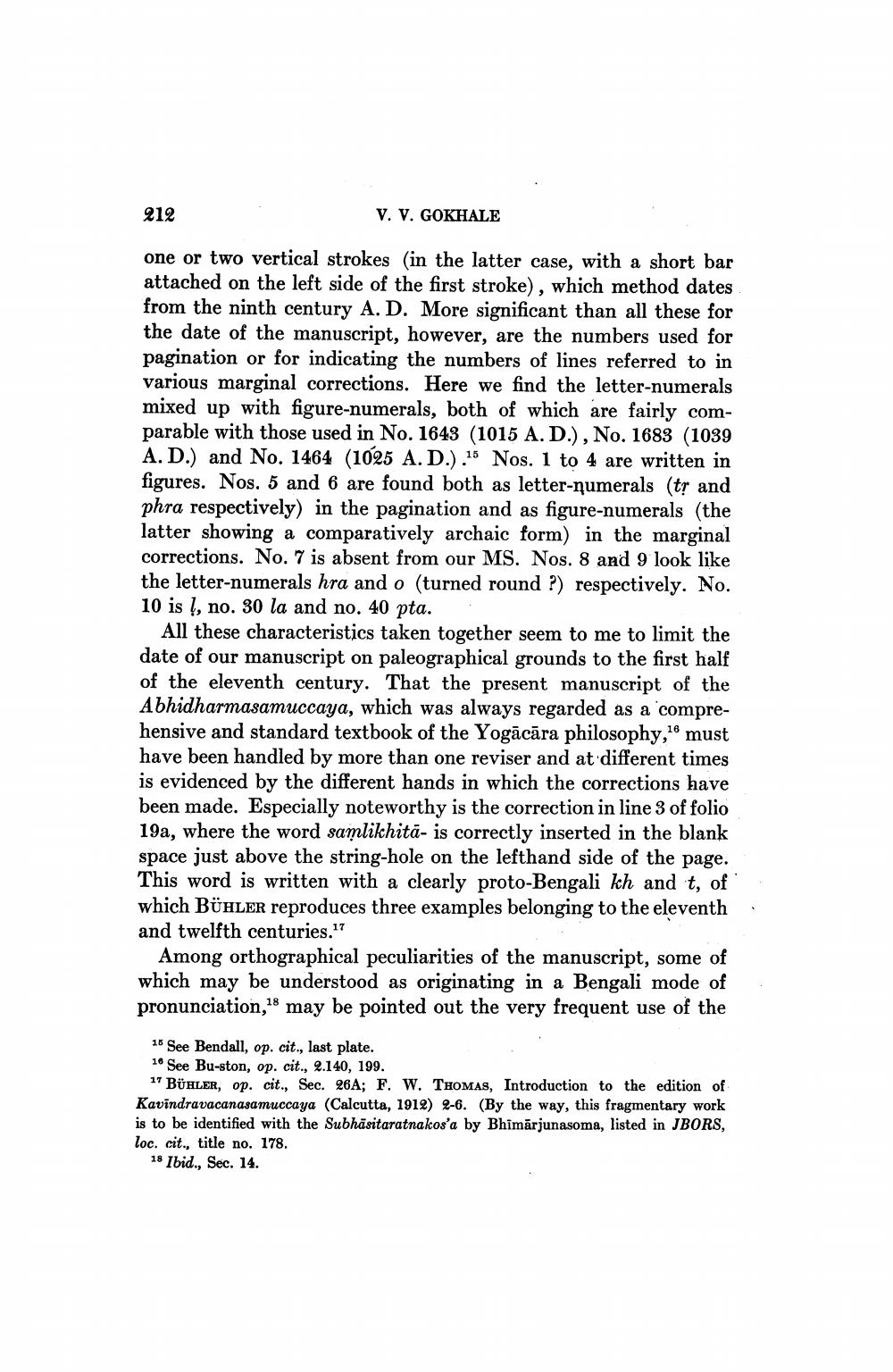Book Title: Rare Mmanuscript Of Asamgas Abhidharma Samuccaya Author(s): V V Gokhale Publisher: V V Gokhale View full book textPage 6
________________ 212 V. V. GOKHALE one or two vertical strokes (in the latter case, with a short bar attached on the left side of the first stroke), which method dates from the ninth century A. D. More significant than all these for the date of the manuscript, however, are the numbers used for pagination or for indicating the numbers of lines referred to in various marginal corrections. Here we find the letter-numerals mixed up with figure-numerals, both of which are fairly comparable with those used in No. 1643 (1015 A.D.), No. 1683 (1039 A.D.) and No. 1464 (1025 A.D.).15 Nos. 1 to 4 are written in figures. Nos. 5 and 6 are found both as letter-numerals (t? and phra respectively) in the pagination and as figure-numerals (the latter showing a comparatively archaic form) in the marginal corrections. No. 7 is absent from our MS. Nos. 8 and 9 look like the letter-numerals hra and o (turned round ?) respectively. No. 10 is ļ, no. 30 la and no. 40 pta. All these characteristics taken together seem to me to limit the date of our manuscript on paleographical grounds to the first half of the eleventh century. That the present manuscript of the Abhidharmasamuccaya, which was always regarded as a comprehensive and standard textbook of the Yogācāra philosophy,18 must have been handled by more than one reviser and at different times is evidenced by the different hands in which the corrections have been made. Especially noteworthy is the correction in line 3 of folio 19a, where the word samlikhitā- is correctly inserted in the blank space just above the string-hole on the lefthand side of the page. This word is written with a clearly proto-Bengali kh and t, of which BÜHLER reproduces three examples belonging to the eleventh and twelfth centuries."? Among orthographical peculiarities of the manuscript, some of which may be understood as originating in a Bengali mode of pronunciation,18 may be pointed out the very frequent use of the . 16 See Bendall, op. cit., last plate. 16 See Bu-ston, op. cit., 2.140, 199. 17 BÜHLER, op. cit., Sec. 26A; F. W. THOMAS, Introduction to the edition of Kavindravacanasamuccaya (Calcutta, 1912) 2-6. (By the way, this fragmentary work is to be identified with the Subhāsitaratnakos'a by Bhimārjunasoma, listed in JBORS, loc. cit., title no. 178. 18 Ibid., Sec. 14.Page Navigation
1 ... 4 5 6 7
